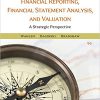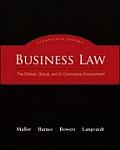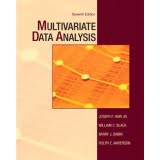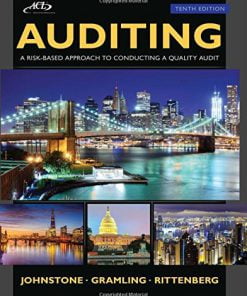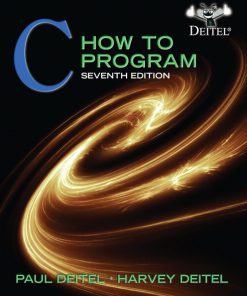Solution Manual for Introduction to Statistics and Data Analysis 6th by Peck
$35.00 Original price was: $35.00.$26.50Current price is: $26.50.
Solution Manual for Introduction to Statistics and Data Analysis 6th by Peck
Instant download Solution Manual for Introduction to Statistics and Data Analysis 6th by Peck pdf docx epub after payment.
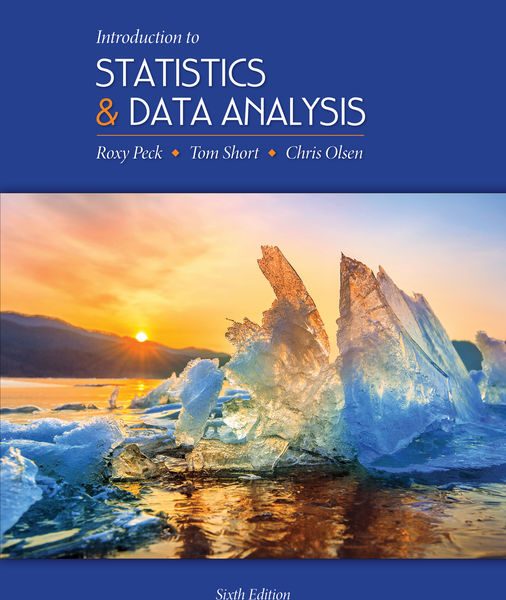
Product details:
- ISBN-10 : 1337793612
- ISBN-13 : 978-1337793612
- Author: Roxy Peck; Chris Olsen; Jay Devore
Peck, Short, and Olsen’s INTRODUCTION TO STATISTICS AND DATA ANALYSIS, 6th Edition stresses interpretation and communication of statistical information through hands-on, activity based learning using real data in order to get you thinking statistically. This 6th Edition contains new sections on randomization-based inference: bootstrap methods for simulation-based confidence intervals and randomization tests of hypotheses. These new sections are accompanied by online Shiny apps, which can be used to construct bootstrap confidence intervals and to carry out randomization tests. In addition, a new visualization tool at statistics.cengage.com will help you understand these new concepts. WebAssign for Statistics accompanies this text. Designed by educators, WebAssign helps you learn not just do homework. WebAssign grants access to the ebook, assessments and analytics to enable you to be a self-sufficient learner and help you succeed in your course.
Table of contents:
1. THE ROLE OF STATISTICS AND THE DATA ANALYSIS PROCESS: Why Study Statistics? The Nature and Role of Variability. Statistics and the Data Analysis Process. Types of Data and Some Simple Graphical Displays.
2. COLLECTING DATA SENSIBLY: Statistical Studies: Observation and Experimentation. Sampling. Simple Comparative Experiments. More on Experimental Design. Interpreting and Communicating the Results of Statistical Analyses. More on Observational Studies: Designing Surveys (online).
3. GRAPHICAL METHODS FOR DESCRIBING DATA: Displaying Categorical Data: Comparative Bar Charts and Pie Charts. Displaying Numerical Data: Stem-and-Leaf Displays. Displaying Numerical Data: Frequency Distributions and Histograms. Displaying Bivariate Numerical Data. Interpreting and Communicating the Results of Statistical Analyses.
4. NUMERICAL METHODS FOR DESCRIBING DATA: Describing the Center of a Data Set. Describing Variability in a Data Set. Summarizing a Data Set: Boxplots. Interpreting Center and Variability: Chebyshev’s Rule, the Empirical Rule, and z Scores. Interpreting and Communicating the Results of Statistical Analyses.
5. SUMMARIZING BIVARIATE DATA: Correlation. Linear Regression: Fitting a Line to Bivariate Data. Assessing the Fit of a Line. Nonlinear Relationships and Transformations. Interpreting and Communicating the Results of Statistical Analyses. Logistic Regression (online).
6. PROBABILITY: Chance Experiments and Events. Definition of Probability. Basic Properties of Probability. Conditional Probability. Independence. Some General Probability Rules. Estimating Probabilities Empirically Using Simulation.
7. RANDOM VARIABLES AND PROBABILITY DISTRIBUTIONS: Random Variables. Probability Distributions for Discrete Random Variables. Probability Distributions for Continuous Random Variables. Mean and Standard Deviation of a Random Variable. Binomial and Geometric Distributions. Normal Distributions. Checking for Normality and Normalizing Transformations. Using the Normal Distribution to Approximate a Discrete Distribution.
8. SAMPLING VARIABILITY AND SAMPLING DISTRIBUTIONS: Statistics and Sampling Variability. The Sampling Distribution of a Sample Mean. The Sampling Distribution of a Sample Proportion.
9. Estimation Using a Single Sample: Point Estimation. Large-Sample Confidence Interval for a Population Proportion. Confidence Interval for a Population Mean. Interpreting and Communicating the Results of Statistical Analyses. Bootstrap Confidence Intervals for a Population Proportion (optional). Bootstrap Confidence Intervals for a Population Mean (optional).
10. HYPOTHESIS TESTING USING A SINGLE SAMPLE: Hypotheses and Test Procedures. Errors in Hypothesis Testing. Large-Sample Hypothesis Tests for a Population Proportion. Hypothesis Tests for a Population Mean. Power and Probability of Type II Error. Interpreting and Communicating the Results of Statistical Analyses. Exact Binomial Test and Randomization Test for a Population Proportion (optional). Randomization Test for a Population Mean (optional).
11. COMPARING TWO POPULATIONS OR TREATMENTS: Inferences Concerning the Difference Between Two Population or Treatment Means Using Independent Samples. Inferences Concerning the Difference Between Two Population or Treatment Means Using Paired Samples. Large-Sample Inferences Concerning the Difference Between Two Population or Treatment Proportions. Interpreting and Communicating the Results of Statistical Analyses. Randomization-Based Inference for a Difference in Proportions (optional). Randomization-Based Inference for a Difference in Means (optional).
12. THE ANALYSIS OF CATEGORICAL DATA AND GOODNESS-OF-FIT TESTS: Chi-Square Tests for Univariate Data. Tests for Homogeneity and Independence in a Two-way Table. Interpreting and Communicating the Results of Statistical Analyses.
13. SIMPLE LINEAR REGRESSION AND CORRELATION: INFERENTIAL METHODS: Simple Linear Regression Model. Inferences about the Slope of the Population Regression Line. Checking Model Adequacy. Inferences Based on the Estimated Regression Line
People also search:
Introduction to Statistics and Data Analysis 6th
Introduction to Statistics and Data Analysis 6th pdf
Introduction to Statistics and Data Analysis
beginning statistics with data analysis
|
basic statistical tools for data analysis
|
|
what is introduction to statistics
|
Related products
Solution Manual
Solution Manual
Management Information Systems Managing the Digital Firm Laudon 14th Edition Solutions Manual
Solution Manual
Solution Manual for Introduction to Robotics Mechanics and Control 3rd Edition by Craig
Solution Manual
International Accounting Doupnik 4th Edition Solutions Manual
Solution Manual
Solution Manual for Introduction to Electrodynamics, 4/E 4th
Solution Manual
Auditing A Risk Based-Approach to Conducting a Quality Audit Johnstone 10th Edition Solutions Manual


